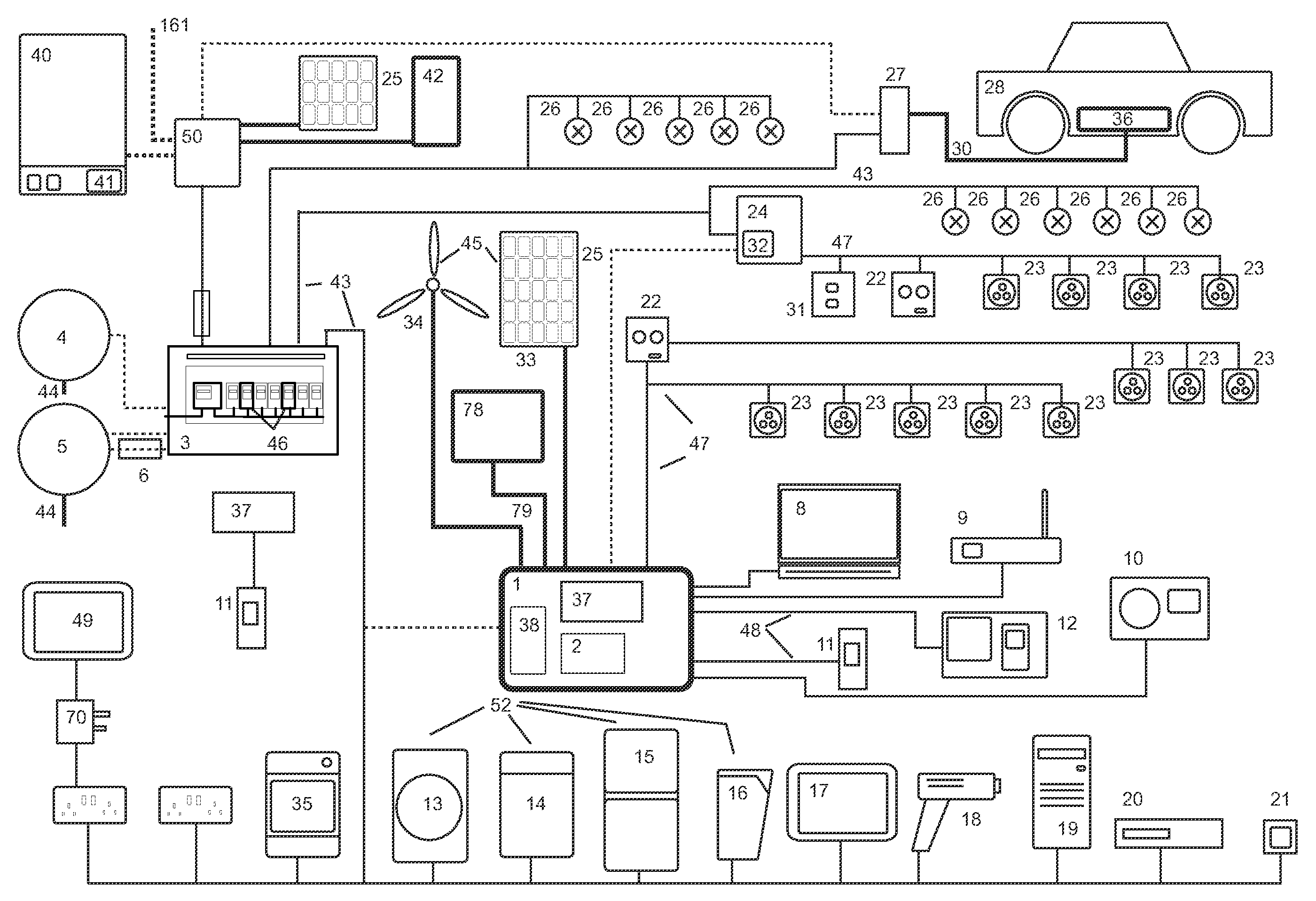Systems, devices and methods for electricity provision, usage monitoring, analysis, and enabling improvements in efficiency
a technology of electricity provision and system, applied in the direction of dc source parallel operation, load balancing in dc network, wind energy generation, etc., can solve the problems of low cost focus and high ac/dc loss, inefficient connection, and high churn, so as to facilitate consumers in changing their energy usage behaviour, simplify installation and control, and facilitate the effect of adjusting the energy consumption
- Summary
- Abstract
- Description
- Claims
- Application Information
AI Technical Summary
Benefits of technology
Problems solved by technology
Method used
Image
Examples
Embodiment Construction
[0060]Preferred embodiments of the invention will now be described in detail with reference to the accompanying drawings herein:
[0061]Referring to FIG. 1 which shows a high level schematic of elements of the Energy Environment (EE) 100 configured as a Home Energy Environment (HEE) 101, Energy Monitoring Environment (EME) 102 and Energy Change Environment (ECE) 103, where said HEE 101 includes power devices 59 such as a Home Energy Server (HES) 1 for efficient AC / DC provision from a mains supply 44 or from integration of a local renewable 45, or a Zone Energy Module (ZEM) 24, or Light Switch Socket Units (LSSU) 22 with integral Lighting Switch Modules (LSM) 60 which is shown in receiving an input from a local renewable source 45 being a deployed Solar Blind 57 in this example. Where the HES 1 is shown supporting a Portable Charger Unit (PCU) 37, a Display 2 and containing communication means, usage analysing software 170 and power control module 38 and physically connecting via side-...
PUM
 Login to View More
Login to View More Abstract
Description
Claims
Application Information
 Login to View More
Login to View More - R&D
- Intellectual Property
- Life Sciences
- Materials
- Tech Scout
- Unparalleled Data Quality
- Higher Quality Content
- 60% Fewer Hallucinations
Browse by: Latest US Patents, China's latest patents, Technical Efficacy Thesaurus, Application Domain, Technology Topic, Popular Technical Reports.
© 2025 PatSnap. All rights reserved.Legal|Privacy policy|Modern Slavery Act Transparency Statement|Sitemap|About US| Contact US: help@patsnap.com



